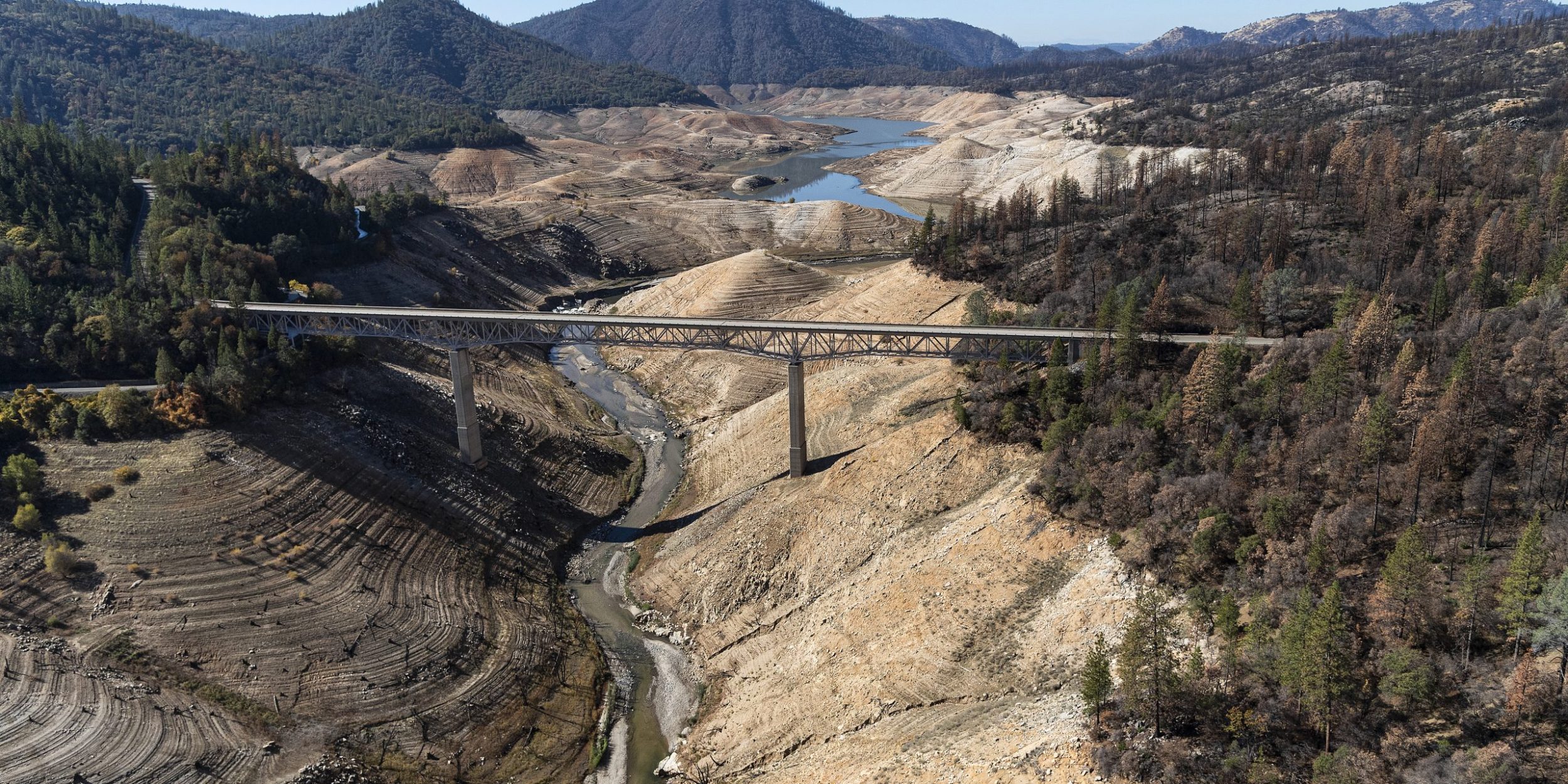A visibly low water level is present in this aerial view of Enterprise Bridge in Butte County. Photo taken 28 October, 2021. Andrew Innerarity/California Department of Water Resources.
Since the year 2000, southwestern North America (SWNA) has been unusually dry due to low precipitation totals and heat – most recently embodied by the exceptional drought in 2021. From 2000 to 2021, mean water-year (October–September) SWNA precipitation was 8.3% below the 1950–1999 average and the temperature was 0.91 °C above average. No other 22-yr period since at least 1901 was as dry or as hot. How does this exceptionally dry period compare to historical droughts?
In a new Nature Climate Change article, authors A. Park Williams, Benjamin I. Cook, and Jason E. Smerdon extended the SWNA summer soil moisture record back to 800ce
using a tree-ring reconstruction and compared the observed drought of 2000–2018 to the infamous megadroughts that occurred repeatedly from 800–1600.
The study reveals that 2000–2021 was the driest 22-yr period since at least 800. It is noted that the 19-yr low soil moisture anomaly from 2000 to 2018 was probably the second driest in at least 1,200 years. Exceeded only by a 19-yr interval during the late-1500s megadrought. In addition, researchers explain that the exceptional drought severity in 2021, ~19% of which is attributable to anthropogenic climate trends, will very likely persist through 2022, matching the duration of the late-1500s megadrought. It’s noted in previous work that continued anthropogenic climate change will increasingly enhance the odds of long, widespread and severe megadroughts returning to SWNA after a hiatus of >400 yr.
Funding for this project was provided by the NOAA Climate Program Office, MAPP program in collaboration with the National Integrated Drought Information System.
Read the full study here.



